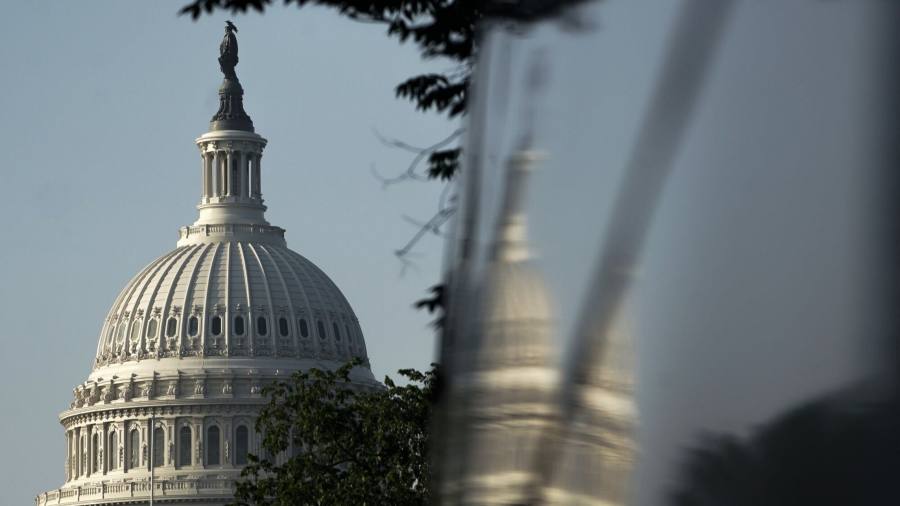A $1tn US government borrowing spree is set to increase the strain on the country’s banking system as Washington returns to the markets in the aftermath of the debt ceiling fight, traders and analysts say.
Following the resolution of that dispute — which had previously prevented the US from increasing its borrowing — the Treasury department will seek to rebuild its cash balance, which last week hit its lowest level since 2017.
JPMorgan has estimated that Washington will need to borrow $1.1tn in short-dated Treasury bills by the end of 2023, with $850bn in net bill issuance over the next four months.
A principal concern voiced by analysts was that the sheer volume of new issuance would push up yields on government debt, sucking cash out of bank deposits.
“Everyone knows the flood is coming,” said Gennadiy Goldberg, a strategist at TD Securities. “Yields will move higher because of this flood. Treasury bills will cheapen further. And that will put pressure on banks.”
He said he was expecting the biggest increase in Treasury bill issuance in history, apart from during crises such as the 2008 financial meltdown and the pandemic in 2020. Analysts said the bills would have maturities ranging from a few days to a year.
The Treasury department offered guidance on Wednesday, saying it aims to return its cash balances to normal levels by September. JPMorgan said the announcement was roughly in line with its overall estimates. The Treasury also said it would “carefully monitor market conditions and adjust its issuance plans as appropriate”.
Yields had already begun to rise in anticipation of the increased supply, added Gregory Peters, co-chief investment officer of PGIM Fixed Income.
That shift increases pressure on US bank deposits, which have already fallen this year as the rise in interest rates and the failure of regional lenders have sent customers seeking higher-yielding alternatives.
Further deposit flight and the rise in yields could in turn push banks to offer higher interest rates on savings accounts, which could be particularly costly for smaller lenders.
“The rise in yields could force banks to raise their deposit rates,” Peters said.
Doug Spratley, head of the cash management team at T Rowe Price, concurred that the Treasury’s return to borrowing “could exacerbate stresses that were already on the banking system”.
The supply shock comes as the Fed is already winding down its bond holdings, in contrast with the recent past, when it was a big buyer of government debt.
“We’re running a significant budget deficit. We still have quantitative tightening. If we have a flood of T-bill issuance as well, we likely have turbulence in the Treasury market in the months ahead of us,” said Torsten Slok, chief economist at Apollo Global Management.
Bank customers have already heavily shifted to money market funds that invest in corporate and sovereign debt following the bank failures this spring.
The stock of funds in money market accounts reached a record $5.4tn in May — up from $4.8tn at the start of the year — according to data from the Investment Company Institute, an industry group.
But while money market funds are typically big purchasers of Treasury bills, they are unlikely to buy up the whole supply, analysts said.
This is largely because money market funds already receive a generous risk-free return — at present an annualised 5.05 per cent — on overnight funds left with the Fed. This is only slightly below the 5.2 per cent available on the comparable Treasury rate, which carries more risk.
At present, roughly $2.2tn a night is being put into the Fed’s overnight reverse repurchase agreement facility (RRP), much of it from money market funds.
That cash could be redeployed to buy Treasury bills if they offered significantly higher returns than the Fed’s facility, analysts said. But the RRP rate moves with interest rates. So if investors expect the Fed to continue to tighten monetary policy, they are likely to keep their cash parked with the central bank overnight, rather than buying bills.
“While [money market funds] with RRP access could buy some T-bills on the margin, we believe this will probably be small relative to other investor types [such as corporations, bond funds without access to the RRP facility and foreign buyers],” Jay Barry, co-head of interest rate strategy at JPMorgan, wrote in a note.
Last week’s blockbuster headline employment figures for May have added to the pressure by boosting investors’ expectations that further rate rises are coming — which could diminish appetite for government debt at current rates.


